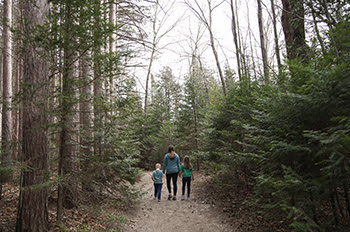First Michigan waterways designated as state water trails

Eight waterways totaling 540-plus miles that flow through more than a dozen counties have been selected as the first state-designated water trails in Michigan, the Department of Natural Resources announced Thursday.
The DNR and the Office of the Great Lakes partnered on the effort to finalize this first round of designations, which includes:
- Central River Raisin Water Trail, 11 miles in Monroe County.
- Chain of Lakes Water Trail, more than 80 miles in Antrim and Kalkaska counties.
- Huron River Water Trail, 104 miles in Livingston, Oakland, Washtenaw and Wayne counties.
- Island Loop Route, 10 miles in St. Clair County.
- Flint River Trail, 72 miles in Genesee and Lapeer counties.
- Middle Grand River Water Trail, 87 miles in Clinton, Eaton, Ingham and Ionia counties.
- Shiawassee River Trail, 88 miles in Genesee, Oakland, Saginaw and Shiawassee counties.
- Upper Grand River Water Trail, 91 miles in Eaton, Ingham and Jackson counties.
A water trail is a designated route on a navigable waterway such as a lake, river, canal or bay, that is designed and managed to create a positive outdoor recreation experience for the user. Water trails feature well-developed access points, often are near significant historical, environmental or cultural points of interest and often have nearby amenities like restaurants, hotels and campgrounds.
“Water trails naturally are an increasing trend in Michigan and throughout the country, as interest in paddle sports and other water-based recreation continues to grow,” said DNR Parks and Recreation Chief Ron Olson. “We are pleased to help advance these opportunities by recognizing model public water trails that set the standard for future of Michigan’s water trails program.”
 Over the last several months, the DNR has worked on creating a water trails program with the goal of announcing the first designations in 2018. Local water trail organizations with established water trail plans were invited to submit applications for designation. That outreach process was handled collaboratively with the Michigan State Parks Advisory Committee, the Michigan State Waterways Commission, the Michigan Trails Advisory Council and the Nonmotorized Advisory Workgroup. Over the last several months, the DNR has worked on creating a water trails program with the goal of announcing the first designations in 2018. Local water trail organizations with established water trail plans were invited to submit applications for designation. That outreach process was handled collaboratively with the Michigan State Parks Advisory Committee, the Michigan State Waterways Commission, the Michigan Trails Advisory Council and the Nonmotorized Advisory Workgroup.
All applications were scored based on criteria including whether a proposed trail:
|
Paul Yauk, the DNR’s state trails coordinator, said that Michigan is in a great position to work with partners to create a statewide water trails program that complements Michigan’s broader trails system.
“Outdoor recreation-based tourism is experiencing major growth right now,” Yauk said. “Designating these rivers as official water trails shines an even brighter light on some incredible natural resources. We fully expect that offering – and expanding – water trail opportunities in Michigan will encourage more outdoor recreation and healthier lifestyles, and also serve as regional destinations that will give a boost to local economies.”
Michigan has more miles of Great Lakes coastline than any other state and thousands of miles of rivers and streams. The use of waterways for transportation in Michigan is not new. Native Americans first used them for sustenance and trade; early European settlers used them to transport goods and timber; and, water resources were the foundation of Michigan’s earliest manufacturing and shipping industries.
“Today’s announcement celebrates our state’s connections to the Great Lakes coast and Michigan’s inland waters,” said Office of the Great Lakes Director Jon Allan. “We have made significant investments with community partners to build, market and maintain water trails. This program is the culmination of a commitment to public access and opportunities for recreation on Great Lakes waters – especially important as we see paddle sports gain tremendously in popularity.”
Ribbon cuttings for the newly designated water trails will take place during the 2019 paddling season. Watch michigan.gov/dnrtrails for more information, which will be provided early in 2019, on the application process for next year’s designations.




